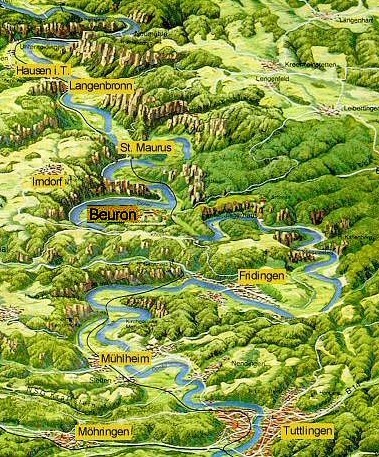
After Mühlheim an der Donau, a beautiful section of the Danube cycle path begins, for me the most beautiful. The traffic noise stops, suddenly you are alone with the Danube in the narrow valley.
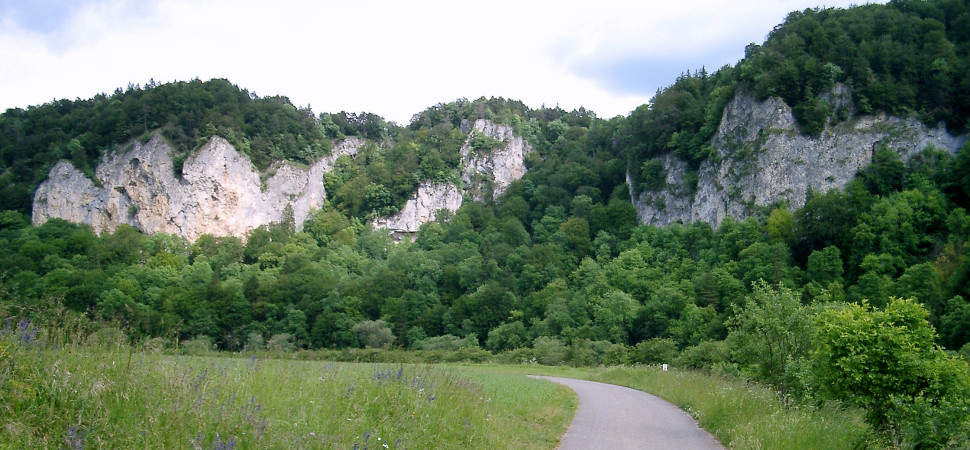
Soon you cross the picturesque village of Fridingen with the Ifflinger Castle (from the 14th century)
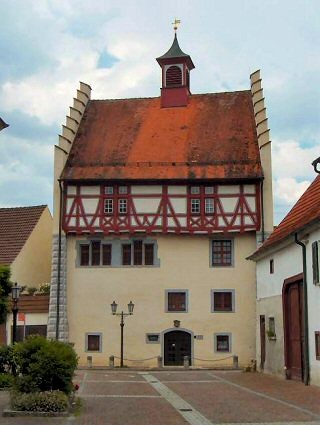
Shortly after Fridingen you are alone again with the Danube and silence returns.
![]()
Then there is a small ascent to overcome and as soon as it goes downhill again, one comes to
Beuron
The legend tells that Count Gerold von Bussen, a loyal follower and standard-bearer, Charlemagne, founded the first Beuron monastery in 777. The first complex was destroyed by the Hungarians. Reconstruction took place in 1077 at the present location in the Danube valley. The first preserved document about the old Beuron monastery dates from 1097, in which Pope Urban confirms the foundation and takes it under papal protection. Beuron was one of the oldest Augustinian monasteries in Germany and belonged to the Lateranensische Augustinerkongregation. From the beginning, the monastery and church were under the protection of St. Martin of Tours and the Virgin Mary.
During the Thirty Years War the monastery was almost completely destroyed. But already in 1694 the canons commissioned Franz Beer to rebuild the east and west wings, and in 1732-1738 they had the church rebuilt by Matthäus Scharpf. In the following decades it was furnished by important artists. Secularisation also abolished Beuron Abbey and transferred it with all its possessions to the princely house of Hohenzollern-Sigmaringen.
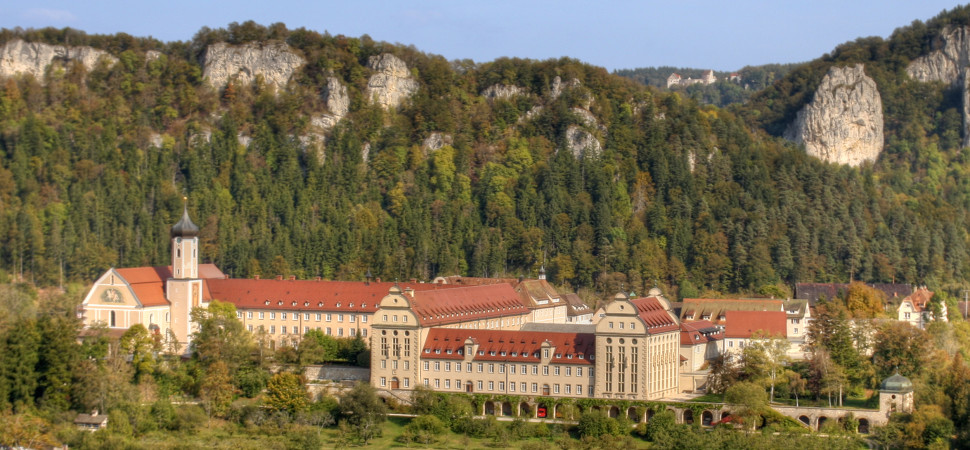
The abandoned monastery served as a military hospital in times of war, and in peacetime a small part of the rooms were used as official residences. After sixty years, on December 6, 1862, the foundation of Prince Widow Katharina von Hohenzollern enabled a new beginning of monastic life. She bought the monastery and handed it over to the Benedictine monks.
Within a short time the number of monks had grown so much that the baroque monastery complex had to be extended.
Beuron also expanded by founding and resettlement of other monasteries in Germany and abroad.
Together with its daughter monasteries, the Archabbey formed its own association within the entire Benedictine order, the "Benedictine Confederation": the "Beuron Benedictine Congregation". The abbeys of Weingarten and Seckau Abbey in Upper Styria belong to it.
To get calm inside I recommend a visit to the vespers in the monastery church. It takes place daily at 6 pm, on Sunday at 3 pm and is sung in Latin by the monks - a very beautiful, impressive experience.
.
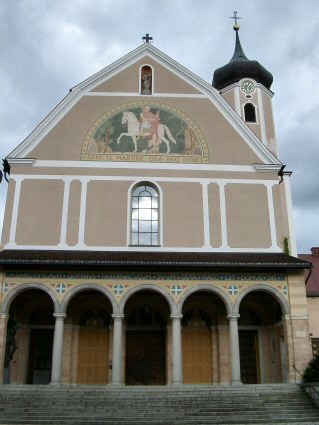
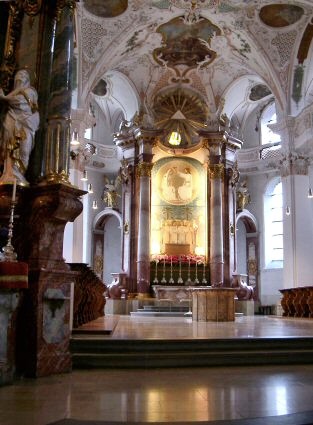


Danube cycle path